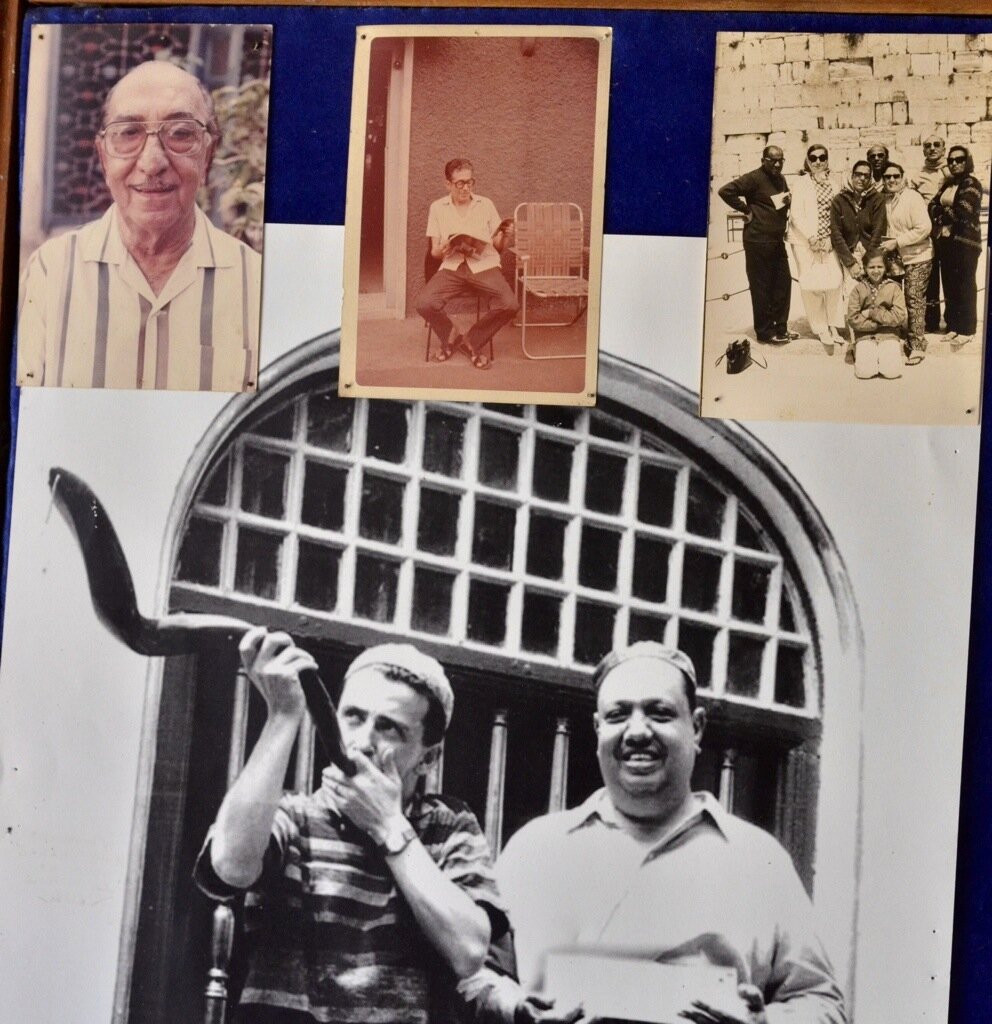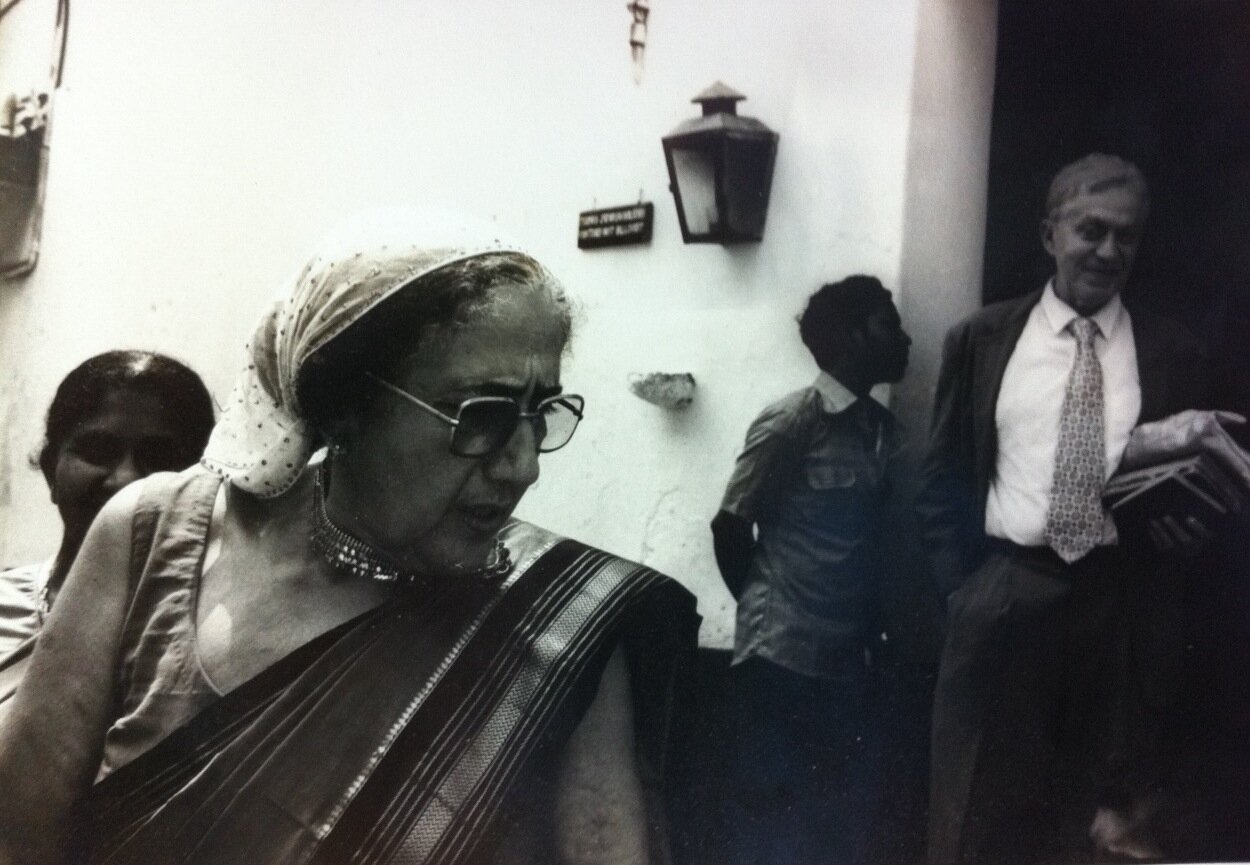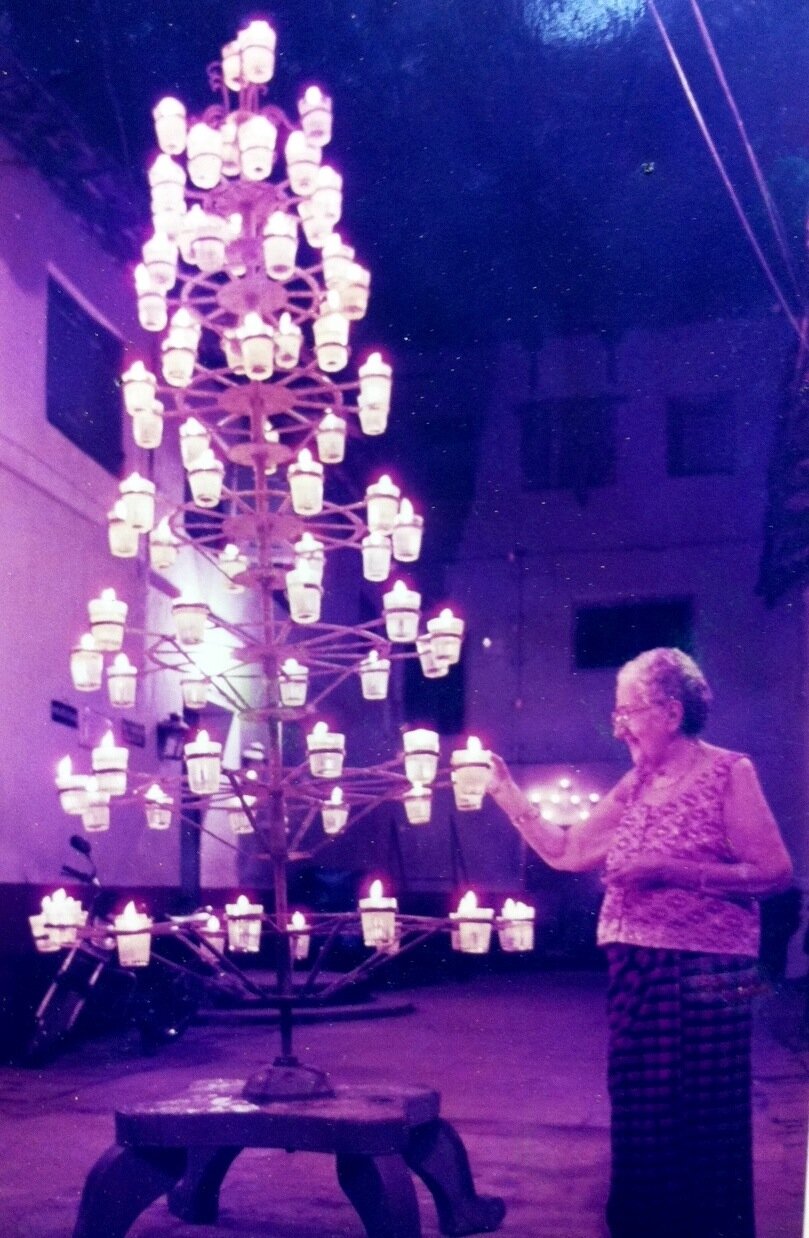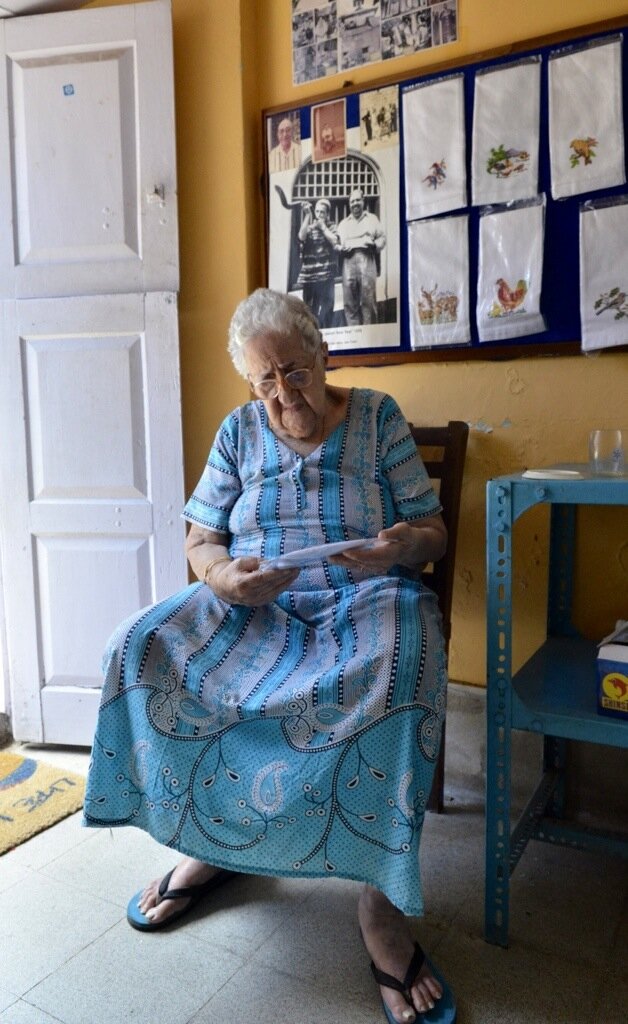Friday Night Services in Paradesi Synagogue
From Lora (David's text follows):Since we left Taipei in the beginning of January David and I have been a community of two. Of course we have spent time in the company of fellow travelers who have become new friends, notably the folks from Great Barrington and New York who we met in the aptly named Friendship Hotel in Bhamo, eight wonderful Swiss individuals who made up the passenger list of the Amara 2 on our voyage down the Irrawaddy, and the amazing Silvia Marx who we met at a language class in Luang Prabang. We've also had the opportunity to meet and have long conversations our hotel and guest house owners, guides and drivers, and the students in the language centers. But when it comes right down to it, it's the two of us swimming in a constantly changing sea of strangers. I don't ever take for granted the company and companionship of dear friends and family - people who 'speak my language' in more ways than being able to converse in English. Yet I haven't experienced the visceral importance of them in my life, and how much I miss them, until it was driven home last Friday night in Cochin (or Kochi, or Fort Kochi).On the short list (and it is a very short list) of sites and sights to visit in Fort Kochi are the Chinese Fishing nets, the Dutch Palace, the 'washing place' (more on that in a future blog), and the 'Jewish' synagogue (so called by the rickshaw drivers who are anxious to take you there). In fact the town is quite proud of its connection to Judaism: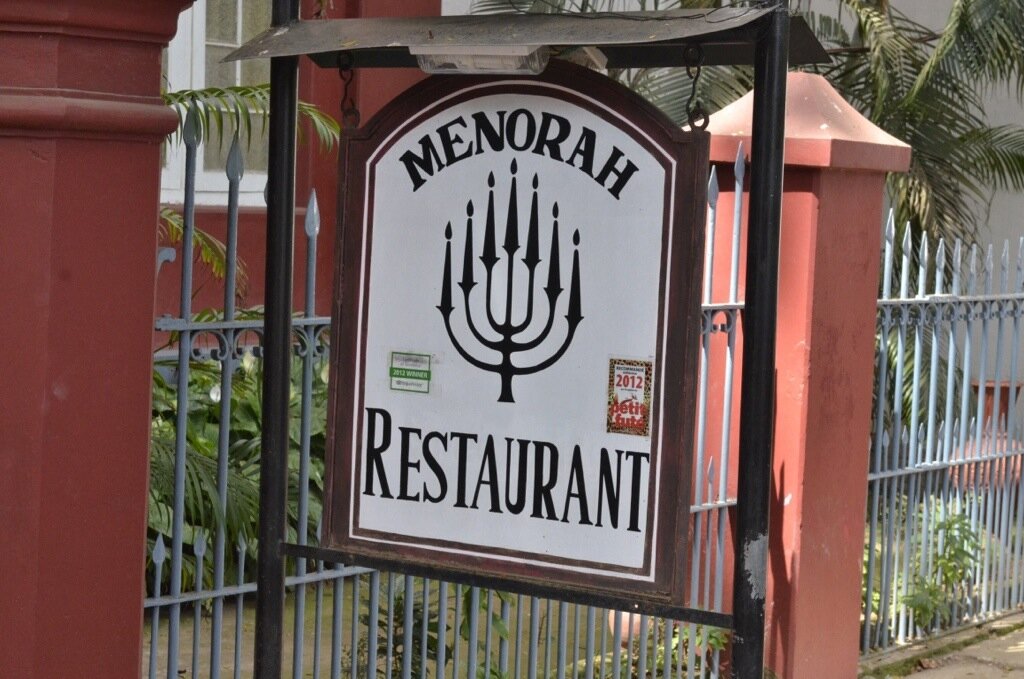
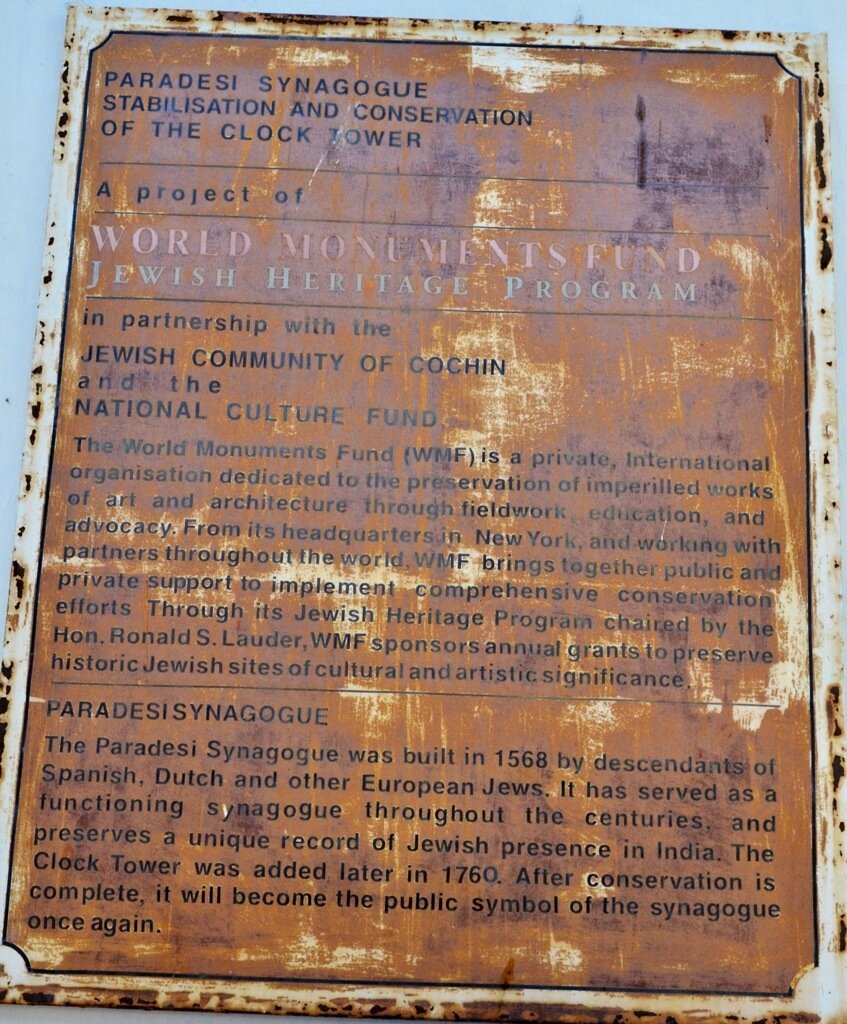 The first time we tried to visit the synagogue, not surprisingly located in Jew Town at the end of:
The first time we tried to visit the synagogue, not surprisingly located in Jew Town at the end of: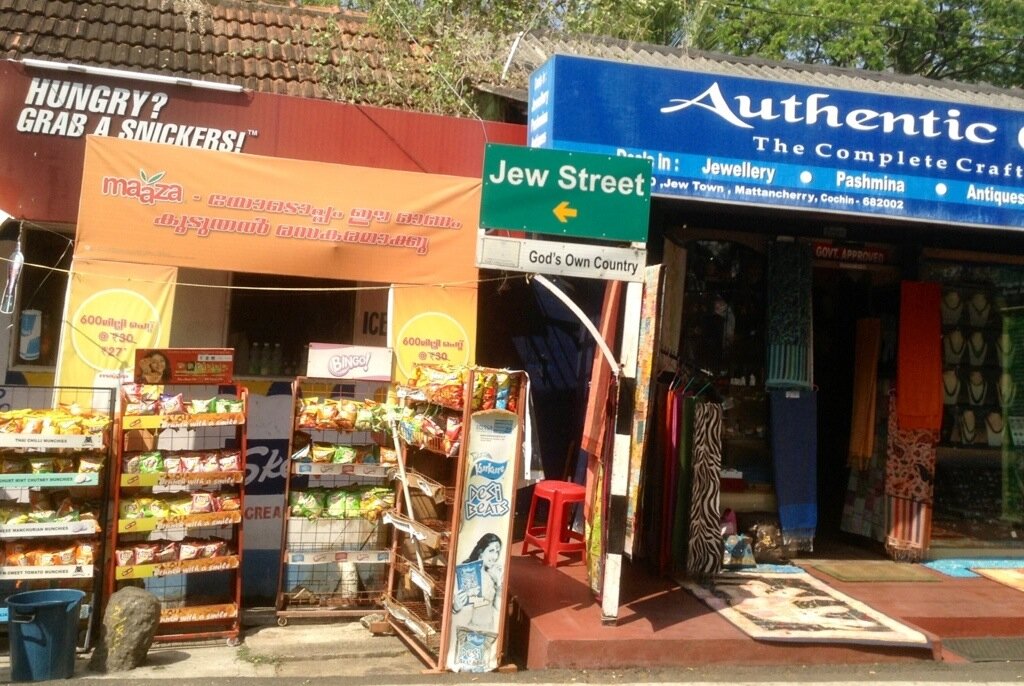 a narrow, winding lane
a narrow, winding lane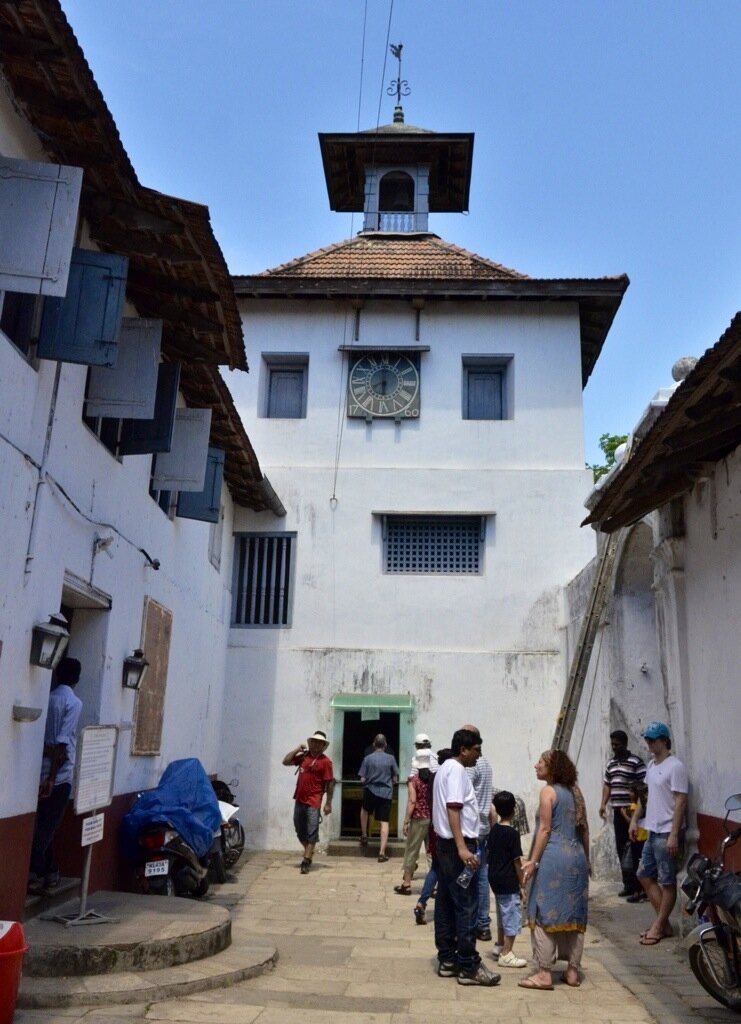 There was such a swarm of tourists including hundreds of school children on an outing, we decided to try another time.
There was such a swarm of tourists including hundreds of school children on an outing, we decided to try another time.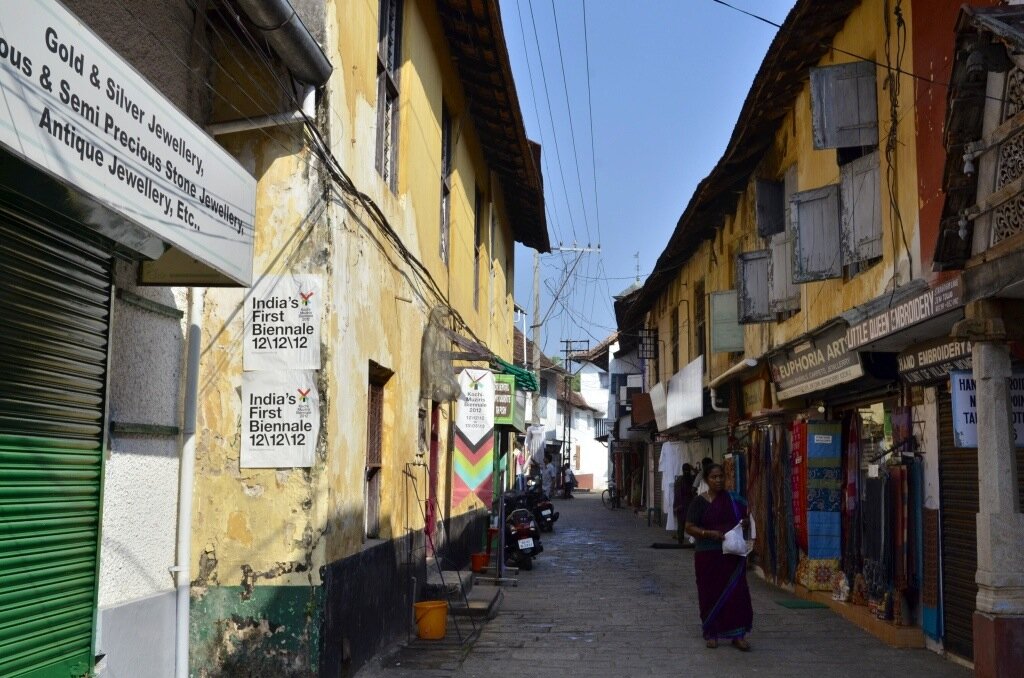 We were surprised to learn that even though there are only eight elderly Jews remaining in the congregation, Friday night services are still held there. So we decided to wait until Friday night and attend the service. As a consolation prize our accommodating rickshaw driver took us past the old cemetery where apparently they had recently laid to rest Jew number 9.
We were surprised to learn that even though there are only eight elderly Jews remaining in the congregation, Friday night services are still held there. So we decided to wait until Friday night and attend the service. As a consolation prize our accommodating rickshaw driver took us past the old cemetery where apparently they had recently laid to rest Jew number 9.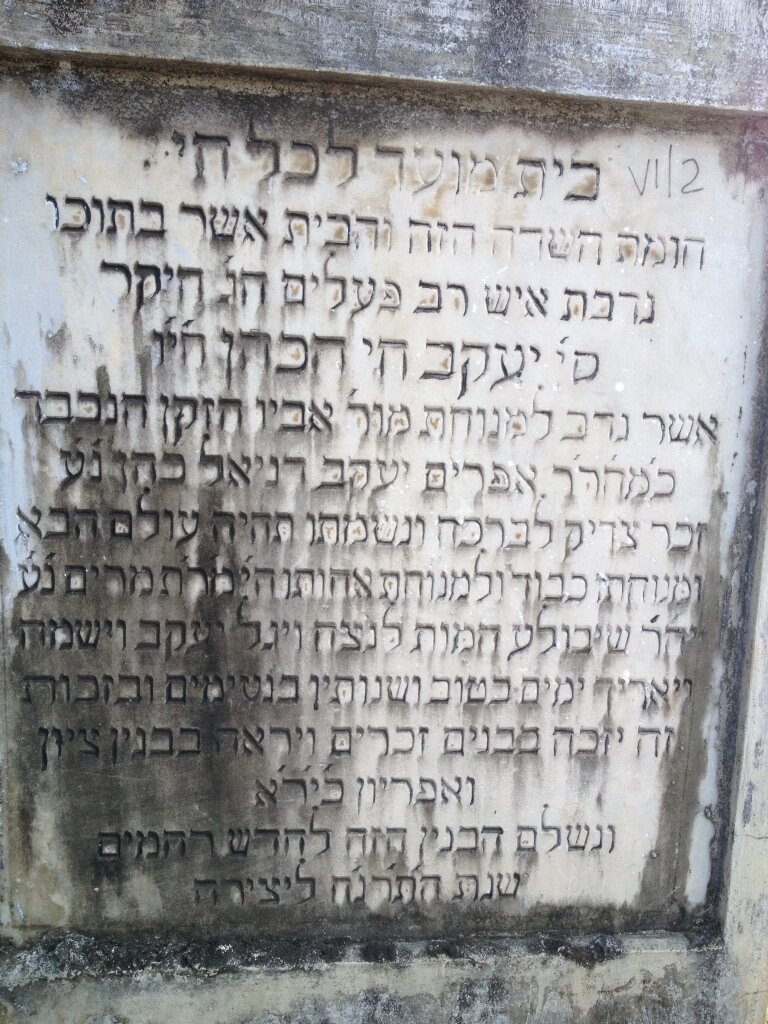 On Friday we arrived and entered the old building (purposely located adjacent to a police station as a result of the terrorist bombings in Bombay), and correctly answered the password posed by the guard ("Jews?" "Yes." "Proceed.").
On Friday we arrived and entered the old building (purposely located adjacent to a police station as a result of the terrorist bombings in Bombay), and correctly answered the password posed by the guard ("Jews?" "Yes." "Proceed.").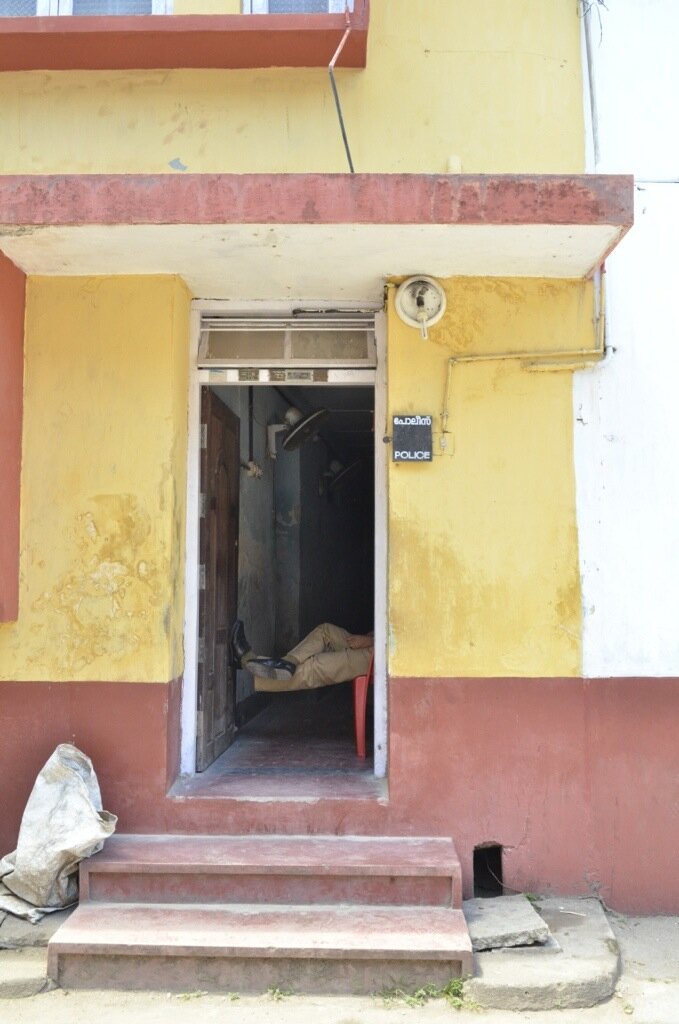 We made our way through a dark, narrow vestibule and entered the sanctuary and stepped many generations back in time. The good-sized room was light and airy, with white and soft blue walls. It was illuminated by candles flickering in dozens of frosted glass candelabra suspended from the high ceiling. Antique blue and white Chinese tiles covered the floor. A shallow balcony projected from the rear wall and in the center of the room, facing the ark, was a raised circular bimah accessed by a short flight of stairs. A wooden balustrade circled the bimah which held a simple lectern made of the same warm wood. There were many signs saying No Photos! and in fact tourists visiting the synagogue during regular hours had to check their cameras before entering. Operating under the special dispensation for MOTs (Members of the tribe) I took a covert picture of the sanctuary - shot from the hip - never my specialty...but it gives you an idea of what the room looked like.
We made our way through a dark, narrow vestibule and entered the sanctuary and stepped many generations back in time. The good-sized room was light and airy, with white and soft blue walls. It was illuminated by candles flickering in dozens of frosted glass candelabra suspended from the high ceiling. Antique blue and white Chinese tiles covered the floor. A shallow balcony projected from the rear wall and in the center of the room, facing the ark, was a raised circular bimah accessed by a short flight of stairs. A wooden balustrade circled the bimah which held a simple lectern made of the same warm wood. There were many signs saying No Photos! and in fact tourists visiting the synagogue during regular hours had to check their cameras before entering. Operating under the special dispensation for MOTs (Members of the tribe) I took a covert picture of the sanctuary - shot from the hip - never my specialty...but it gives you an idea of what the room looked like.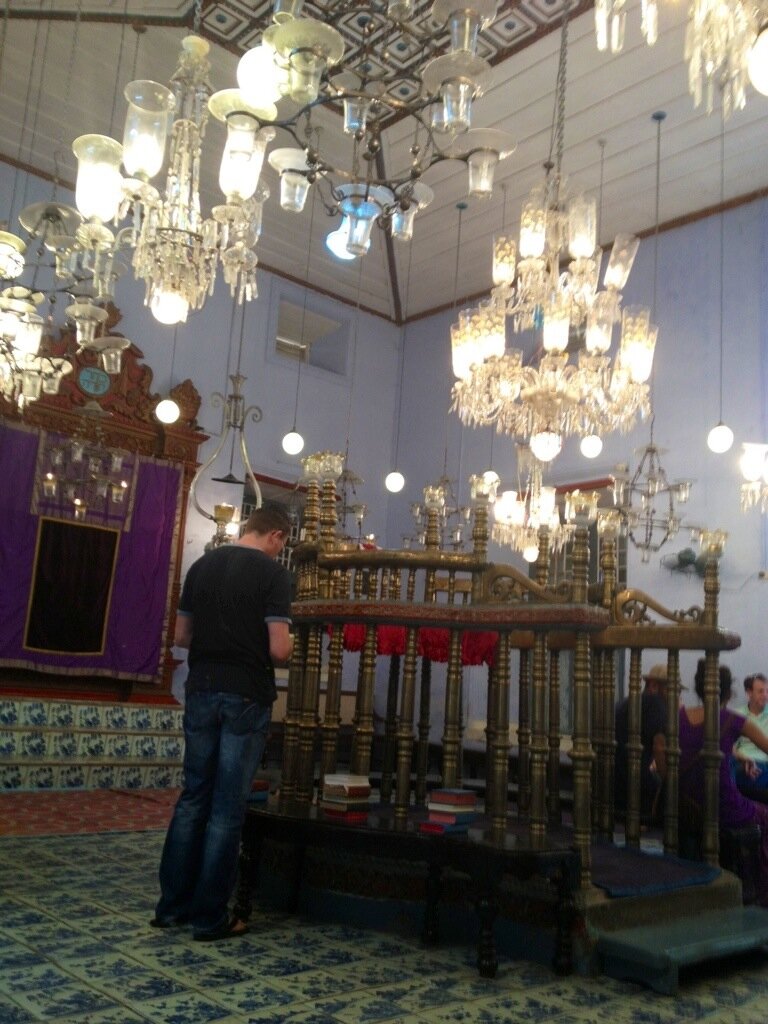 On arriving we joined a group of perhaps 8 people sitting on the benches that lined the two long walls. I sat next to a very urbane, handsome gentleman from Paris and David was happily situated next to an extremely attractive young blond woman from Johannesburg. A few backpackers/students drifted in and by 6:30 the time the service was scheduled to begin we were still one man shy of a minion (the traditional number of post bar mitzvah males required for a service). (None of 8 remaining 80+ year old members of the congregation were present.) Somehow this didn't strike me as the sort of shul that might welcome women to be among the 'counted'.Then something amazing happened. A tour group of Israelis arrived - with all the energy only a group of 12 grandmotherly Israeli women and one lone man could generate. They quickly filled in the empty seats. The men then looked at each other debating who would lead the service. David and the Parisien allowed, very sotto voce, that they could/would, but very reluctantly. With not a moment of hesitation, however, the lone man from the Israeli group, tall and elegant, stepped forward and with the congregation's permission (and to the relief of the other men), volunteered to lead. While it wasn't exactly a Sarah Boyle moment, it was awfully close. This was no amateur, but a classically trained hazen (cantor) with a gorgeous voice, rich and warm, that filled every corner of the old building.I was longing for a familiar community and here it was. Among the reasons I felt so instantly comfortable in this place were seeing David and the other men in yamulkahs and holding siddurim (prayer books) and seeing the upstairs balcony, as both reminded me of the kind of synagogues we belonged to as children in Hartford. There is a joke that Jews share about their synagogues. It goes something like, "This is my shul, and over there is the shul I wouldn't be caught dead in." For my father this was no joke. He had a fight with the conservative Emanuel Synagogue we belonged to (a membership fee or something - I don't remember exactly, and anyway, it's not important). He quit in a huff and got a family membership in the reform synagogue in West Hartford where I went to Hebrew school - or confirmation class as they called it. For himself, he joined an orthodox synagogue in downtown Hartford where he attended services. In his synagogue (the Pearl Street Shul as it was called) the women weren't allowed to sit downstairs. Their place was in the balcony where, except for the first row of seriously observant women who followed along with the service, there wasn't a lot of attention paid to the goings on downstairs. Instead there was gossip - all sorts of information passed in hushed voices from behind hand-covered mouths. This was far more interesting to a young girl than the musty rustlings of prayer book pages being turned by swaying men mumbling prayers too fast for us to ever follow along. The moments that did, however, hold my attention were when the cantor sang the prayers I knew well and the melodies that were and will always be imprinted in my head and heart.As the hazen in Fort Kochi began to sing I reached into my pocket and switched on my iPhone so I could record just a moment to share with you:https://vimeo.com/59924293At the end of the service people stood and shook hands with and/or kissed their neighbors wishing them "Shabbat Shalom" then the Israeli women led us all in dancing to songs and steps that were as familiar to me as the memories of my time in the old synagogue on Pearl Street. I still had my iphone handy, so I recorded this:https://Vimeo.com/59924295It was a wonderful hour spent in a totally familiar and warmly comfortable community which left us both in very good moods indeed. Better yet, when we got back to our hotel there was an email from our wonderful daughter-in-law, Joanna, wishing us a happy Purim with the sweetest visual possible - our grandson Elijah and the hamamtashen they had just made.
On arriving we joined a group of perhaps 8 people sitting on the benches that lined the two long walls. I sat next to a very urbane, handsome gentleman from Paris and David was happily situated next to an extremely attractive young blond woman from Johannesburg. A few backpackers/students drifted in and by 6:30 the time the service was scheduled to begin we were still one man shy of a minion (the traditional number of post bar mitzvah males required for a service). (None of 8 remaining 80+ year old members of the congregation were present.) Somehow this didn't strike me as the sort of shul that might welcome women to be among the 'counted'.Then something amazing happened. A tour group of Israelis arrived - with all the energy only a group of 12 grandmotherly Israeli women and one lone man could generate. They quickly filled in the empty seats. The men then looked at each other debating who would lead the service. David and the Parisien allowed, very sotto voce, that they could/would, but very reluctantly. With not a moment of hesitation, however, the lone man from the Israeli group, tall and elegant, stepped forward and with the congregation's permission (and to the relief of the other men), volunteered to lead. While it wasn't exactly a Sarah Boyle moment, it was awfully close. This was no amateur, but a classically trained hazen (cantor) with a gorgeous voice, rich and warm, that filled every corner of the old building.I was longing for a familiar community and here it was. Among the reasons I felt so instantly comfortable in this place were seeing David and the other men in yamulkahs and holding siddurim (prayer books) and seeing the upstairs balcony, as both reminded me of the kind of synagogues we belonged to as children in Hartford. There is a joke that Jews share about their synagogues. It goes something like, "This is my shul, and over there is the shul I wouldn't be caught dead in." For my father this was no joke. He had a fight with the conservative Emanuel Synagogue we belonged to (a membership fee or something - I don't remember exactly, and anyway, it's not important). He quit in a huff and got a family membership in the reform synagogue in West Hartford where I went to Hebrew school - or confirmation class as they called it. For himself, he joined an orthodox synagogue in downtown Hartford where he attended services. In his synagogue (the Pearl Street Shul as it was called) the women weren't allowed to sit downstairs. Their place was in the balcony where, except for the first row of seriously observant women who followed along with the service, there wasn't a lot of attention paid to the goings on downstairs. Instead there was gossip - all sorts of information passed in hushed voices from behind hand-covered mouths. This was far more interesting to a young girl than the musty rustlings of prayer book pages being turned by swaying men mumbling prayers too fast for us to ever follow along. The moments that did, however, hold my attention were when the cantor sang the prayers I knew well and the melodies that were and will always be imprinted in my head and heart.As the hazen in Fort Kochi began to sing I reached into my pocket and switched on my iPhone so I could record just a moment to share with you:https://vimeo.com/59924293At the end of the service people stood and shook hands with and/or kissed their neighbors wishing them "Shabbat Shalom" then the Israeli women led us all in dancing to songs and steps that were as familiar to me as the memories of my time in the old synagogue on Pearl Street. I still had my iphone handy, so I recorded this:https://Vimeo.com/59924295It was a wonderful hour spent in a totally familiar and warmly comfortable community which left us both in very good moods indeed. Better yet, when we got back to our hotel there was an email from our wonderful daughter-in-law, Joanna, wishing us a happy Purim with the sweetest visual possible - our grandson Elijah and the hamamtashen they had just made.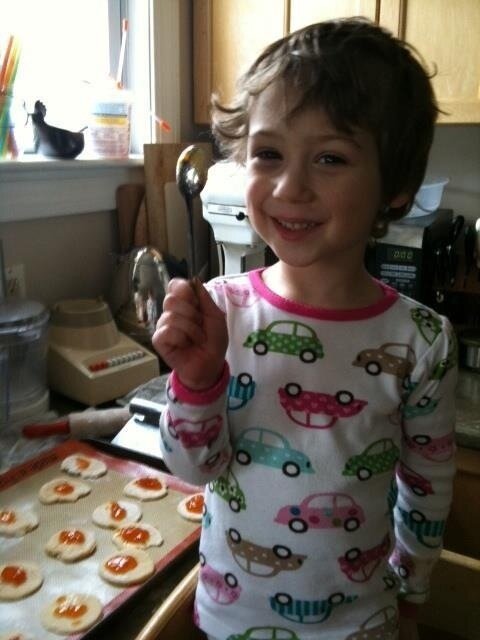
 From David:The high point of our time in Kochi was the Paradesi Synagogue, which wasbuilt in the 1560s. It's got a wonderful story. Take a 30 second peek atthe Wikipedia article about it. To tempt you, let me just say that it wasfounded by the Paradesi Jews -- the "White Jews" -- and only they couldbelong to the congregation. "White Jews" were those who came from Europe(mostly from Portugal and Spain, I believe). The "Black Jews" were theearlier Jewish community in Kochi, of darker skin. Apparently,it was only recentlythat intermarriage between the two communities was permitted.Here's the link:Paradesi synagogueThe high point of the high point was our visit with Sarah Cohen when wewent back to Jew Street on Saturday morning. Sarah Cohen is anordinary name for a Jewish woman, but this Sarah Cohen is actually a90-year old Indian woman who is one of the last eight remaining members ofthe Paradesi Jewish community. The average age of the eight is more than80 years old, so the entire community will disappear within just a coupleof years. Sarah lives just down the street from the synagogue and stillembroiders and sells challah covers and yarmulkes in her shop. She has anexcellent business model: Who would ever sink so low to try tohaggle about price with an inspiring 90 year old Jewess who is one of the lastsurviving members of the synagogue that drew you to her shop in the firstplace? So she can put any price she wants on her merchandise and get fullprice without any bargaining. She is very proud that a recent Israelivisitor ordered 200 yarmulkes from her for a bar mitzvah, and I'm surethat he did not get any volume discount. Below are some photos of Sarah.One shows her wedding in 1942, with a wedding party consisting of morepeople than the entire community as it exists today. Another photo is ofSarah at the synagogue about 10-15 years ago at a Simchat Torah service.(For some reason, Simchat Torah is the most celebrated holiday for thesurviving congregation. Lora says because it involves imbibing copious amounts of alcohol.) A third photo shows Sarah many years ago comingout of the synagogue. And also a photo of Sarah in her shop as she is today.A couple of other things about the synagogue:It has a clock tower with faces on each of the four sides, each face having numerals in a different alphabet. Arabic, Roman,Hebrew and a fourth that I do not remember.Also, there was a Habad Lubavitcher group that had been given visas to come to Kochi to maintain the synagogue. They were kicked out of the country acouple of years ago on the grounds that they had violated the terms oftheir visas. We were told of speculation of several other reasons thatmight have led to their expulsion. "Jew Town", where the synagogue islocated, is now predominantly Muslim, and there is speculation that theMuslim community put pressure on the government to get rid of the Habad.Another speculation is simply a security concern: an in-your-faceLubavitcher group could attract a terrorist attack. (A police station wasactually put across the street from the synagogue because of securityconcerns.) And the most intriguing speculation is that the local touristindustry wanted to get rid of the group. The logic for this speculationis as follows: Instead of living close to the synagogue, the Lubavitcherslived a couple of miles away in the main tourist area of Fort Kochi, andthe merchants did not want an in-your-face group of Lubovitchers spoilingthe nature of the area. Also, the Lubavitchers offered open meals to the public and anyone could partake of the meals at no cost. (Lora says "sounds like Hari Krishas to me"). The restaurants did not want their business taken away by free meals being offered in the area. Who knows?A comment about the Muslim community. There are goats wandering everywhere in town. Our favorite tuk tuk driver says that they are kept by the Muslim community as household pets. But it's hard to think of goats walking at will around the house. And it's hard to imagine that even a pet goat living past the day that a family wants to prepare a goat curry.
From David:The high point of our time in Kochi was the Paradesi Synagogue, which wasbuilt in the 1560s. It's got a wonderful story. Take a 30 second peek atthe Wikipedia article about it. To tempt you, let me just say that it wasfounded by the Paradesi Jews -- the "White Jews" -- and only they couldbelong to the congregation. "White Jews" were those who came from Europe(mostly from Portugal and Spain, I believe). The "Black Jews" were theearlier Jewish community in Kochi, of darker skin. Apparently,it was only recentlythat intermarriage between the two communities was permitted.Here's the link:Paradesi synagogueThe high point of the high point was our visit with Sarah Cohen when wewent back to Jew Street on Saturday morning. Sarah Cohen is anordinary name for a Jewish woman, but this Sarah Cohen is actually a90-year old Indian woman who is one of the last eight remaining members ofthe Paradesi Jewish community. The average age of the eight is more than80 years old, so the entire community will disappear within just a coupleof years. Sarah lives just down the street from the synagogue and stillembroiders and sells challah covers and yarmulkes in her shop. She has anexcellent business model: Who would ever sink so low to try tohaggle about price with an inspiring 90 year old Jewess who is one of the lastsurviving members of the synagogue that drew you to her shop in the firstplace? So she can put any price she wants on her merchandise and get fullprice without any bargaining. She is very proud that a recent Israelivisitor ordered 200 yarmulkes from her for a bar mitzvah, and I'm surethat he did not get any volume discount. Below are some photos of Sarah.One shows her wedding in 1942, with a wedding party consisting of morepeople than the entire community as it exists today. Another photo is ofSarah at the synagogue about 10-15 years ago at a Simchat Torah service.(For some reason, Simchat Torah is the most celebrated holiday for thesurviving congregation. Lora says because it involves imbibing copious amounts of alcohol.) A third photo shows Sarah many years ago comingout of the synagogue. And also a photo of Sarah in her shop as she is today.A couple of other things about the synagogue:It has a clock tower with faces on each of the four sides, each face having numerals in a different alphabet. Arabic, Roman,Hebrew and a fourth that I do not remember.Also, there was a Habad Lubavitcher group that had been given visas to come to Kochi to maintain the synagogue. They were kicked out of the country acouple of years ago on the grounds that they had violated the terms oftheir visas. We were told of speculation of several other reasons thatmight have led to their expulsion. "Jew Town", where the synagogue islocated, is now predominantly Muslim, and there is speculation that theMuslim community put pressure on the government to get rid of the Habad.Another speculation is simply a security concern: an in-your-faceLubavitcher group could attract a terrorist attack. (A police station wasactually put across the street from the synagogue because of securityconcerns.) And the most intriguing speculation is that the local touristindustry wanted to get rid of the group. The logic for this speculationis as follows: Instead of living close to the synagogue, the Lubavitcherslived a couple of miles away in the main tourist area of Fort Kochi, andthe merchants did not want an in-your-face group of Lubovitchers spoilingthe nature of the area. Also, the Lubavitchers offered open meals to the public and anyone could partake of the meals at no cost. (Lora says "sounds like Hari Krishas to me"). The restaurants did not want their business taken away by free meals being offered in the area. Who knows?A comment about the Muslim community. There are goats wandering everywhere in town. Our favorite tuk tuk driver says that they are kept by the Muslim community as household pets. But it's hard to think of goats walking at will around the house. And it's hard to imagine that even a pet goat living past the day that a family wants to prepare a goat curry.